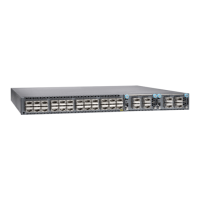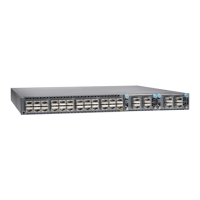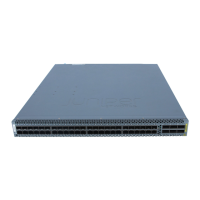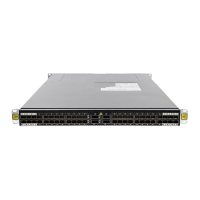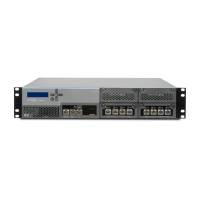Figure 4: QFX5110-32Q Port Panel
4—1— 1 pulse per second (PPS) output connectionElectrostatic discharge (ESD) terminal
5—2— 28 QSFP+ portsRJ-45 connection to grandmaster clock
6—3— 4 QSFP28 portsOutput clock at 10 MHz
Switch Ports
The QFX5110-32Q device ports (0 through 27) support:
•
40-Gbps QSFP+ transceivers
•
QSFP+ direct attach copper (DAC) cables
•
QSFP+ active optical cables (AOC)
•
40-Gbps QSFP+ to SFP+ DACBO cables (40 Gbps breaks out to 10 Gbps for copper
connections)
•
40-Gbps AOCBO cables (40 Gbps breaks out to 10 Gbps for fiber connections)
The QFX5110-32Q uplink ports (28 through 31) support:
•
100-Gbps QSFP28 transceivers
•
40-Gbps QSFP+ transceivers
•
100-Gbps AOC
•
40-Gbps AOC
•
100-Gbps QSFP28 DAC cables
•
40-Gbps QSFP+ DAC cables
•
40-Gbps QSFP+ to SFP+ DACBO cables (40 Gbps breaks out to 10 Gbps for copper
connections)
•
40-Gbps AOCBO cables (40 Gbps breaks out to 10 Gbps for fiber connections)
Channelizing Interfaces
Starting with Junos OS Release 17.3R1, the ports auto-sense the transceiver and set the
port speed to match. The Flexible PIC Concentrator (FPC) does not reboot when the
system mode changes.
The following system modes are available on the QFX5110-32Q:
•
Default mode
13Copyright © 2017, Juniper Networks, Inc.
Chapter 2: Chassis Components and Descriptions
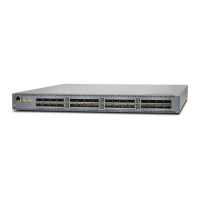
